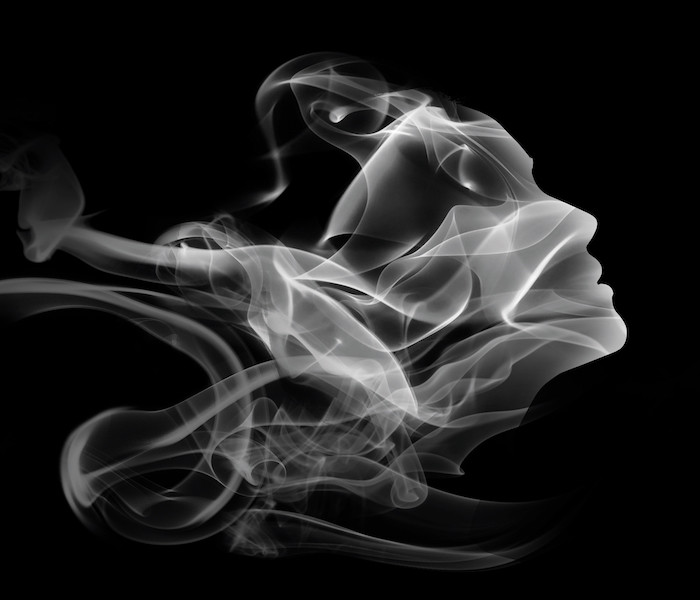
As well as aiding our sense of taste, smells can be incredibly evocative. Professor Charles Spence explains how we are led by our noses.
Olfaction, the technical name for the sense of smell, is one of the most important of our senses as far as the experience of the flavour of food and drink are concerned. Both the initial orthonasal sniff, as we inhale, and the retronasal pulse of air that gets squeezed out from the back of the nose whenever one of your customers swallows a mouthful of your latest concoction contribute to their multisensory experience.
Everyone knows that food appears to lose its taste whenever they have a head cold. Normally, though, under such conditions, your taste buds are actually working just fine. What you have really lost (albeit temporarily) is the sense of smell. In fact, many researchers believe that as much as 75%-95% of what we think we taste really comes from the nose. Given how much of the pleasure of a drink resides in the orthonasal aroma, one has to question the logic of ever drinking through a straw. It would seem like a very bad idea to me, eliminating as it does that most pleasurable orthonasal olfactory hit.
Olfactory cues can be used to set expectations about what something is going to taste like and how much we are going to enjoy the experience. For instance, sweet-smelling scents such as vanilla, caramel and strawberry, when added to a drink, will likely make it taste sweeter (despite the fact that a vanilla pod actually tastes exceedingly bitter). This is part of the reason vanilla is added to ice-cream – because at such cold temperatures your taste buds no longer work, meaning you can no longer literally ‘taste’ the sweetness. Presumably much the same problem is faced by anyone sipping an iced cocktail.
While our responses to the basic tastes (sweet, salty, bitter, sour and umami) are hard-wired, our responses to smells are more or less all learned as a function of the flavours that we have been exposed to from the womb onwards. We all come to like those aromas that have been paired with sweetness, caffeine, alcohol, etc – basically with anything that our brain finds rewarding. However, the fact that we learn to like smells means that people from different parts of the world sometimes learn to associate different tastes with one and the same aroma.
One of my favourite examples of this is benzaldehyde. For western consumers, this smell is associated with sweetness (it is the cherry-almond scent of Bakewell tart, marzipan and Maraschino cherries), while many Japanese consumers associate the aroma with the savoury taste of MSG/umami (the mysterious fifth taste from the east) instead, since it co-occurs in their pickled condiments more often than it does in sweet desserts.
Genetic variation
Intriguingly, we are all anosmic (that is, unable to smell) a certain number of aromas. For instance, our sensitivity to isovaleric acid (a distinctive sweaty note in cheese), s‑ionone (a pleasant floral note added to many food and drink products), isobutyraldehyde (which smells of malt) and cis‑3‑hexen‑1‑ol (which gives food and drink a grassy note) all show a significant degree of genetic variation.
Roughly 1% of the population are unable to smell vanilla. I myself am completely anosmic to the cork taint that can affect bottles of wine. Given such individual differences in genetics and culture, you shouldn’t be surprised when the same drink smells completely different to different people.
However, beyond any scent or aroma that emanates from the drink itself, a number of mixologists and culinary artists have, in recent years, been experimenting with everything from inhaleable cocktails (think, for example, of Bompas & Parr’s Alcoholic Architecture) through a theatrical spritzing over a drink tableside, just like the Italian Futurists were fond of doing back in the 1930s.
Here it is worth noting how scents can be used to trigger specific moods, emotions or nostalgia. Heston Blumenthal has been using the scent of the sweetshop very effectively in his restaurant for years to trigger nostalgic thoughts and feelings associated with childhood pleasures. Scents, in other words, can be incredibly evocative. And anyone who doubts the veracity of the claim should just remember the tale of Proust’s Madeleine.
Then there is the scent of the space itself. Should your bar have a signature scent, like Singapore Airlines, or the cookie scent that permeates the lobby of most branches of the Hilton Double Tree chain? Bear in mind here only the fact that food-related aromas can bias our choice behaviour and even trigger hunger, and perhaps also thirst. The incredible power of desirable food aromas is not lost on all those chains, such as Panera Bread and Cinnabon, which use scent to drive consumer behaviour.
Just think, for instance, how cool it would be to have your bar scented with an aroma that got your customers to start salivating as soon as they walked through the doors? Intriguingly, there was a time when 69 Colebrooke Row used to scent the wall outside. Whatever you decide to do, just make sure that if you serve any snacks to accompany your drinks, the smell of the former doesn’t end up interfering with your guest’s ability to enjoy the latter. This happened not so long ago at Starbucks, when the smell of grilled cheese breakfast sandwiches started to interfere with the coffee aroma.
Smell, then, is key to our enjoyment of a great cocktail, and the top experience providers are increasingly using scent both in and out of the glass to deliver the most enjoyable, not to mention more memorable, multisensory cocktail experiences.


